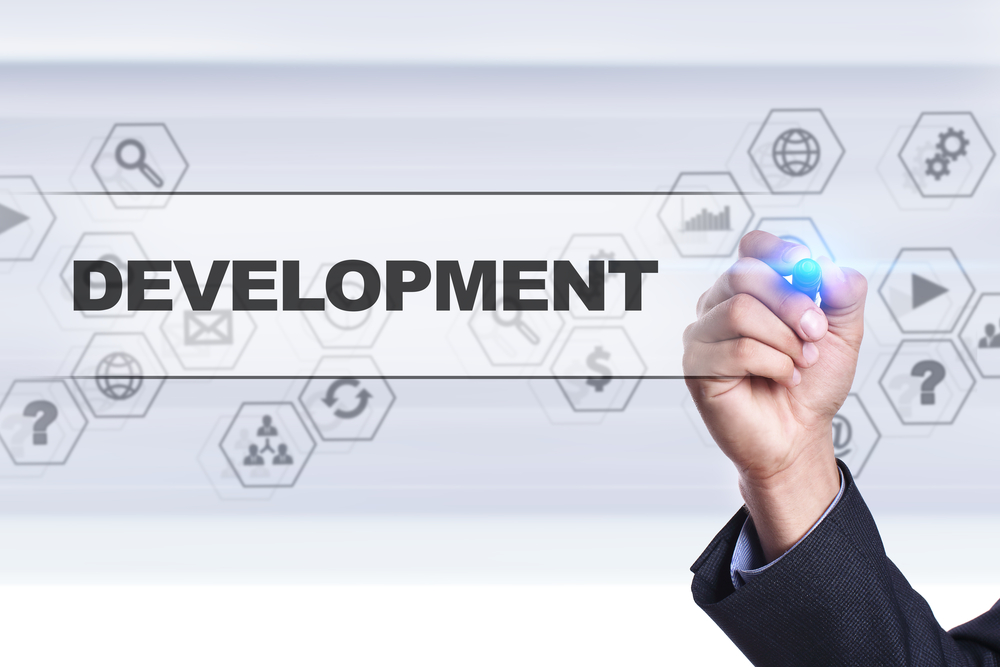Finding the ideal employee with a consultative recruiter like Sigma Recruitment is only the first step towards creating a high-performing manufacturing team.
To stay competitive in today’s candidate-driven market, manufacturing companies need to find ways to empower and retain that crucial talent. After all, while finding the right candidates can be tough in the current market, keeping your employees around can be even harder.
A lack of training in the workplace makes it difficult for team members to reach their potential. Without support, your employees are less likely to accomplish incredible things, and more likely to search for an alternative role with a competitor.
A development plan eliminates those problems by creating engaged, loyal and productive employees. Carefully planned training strategies show your staff a future in your business. With a development plan, you let your people know that you value them and are invested in helping them to be more productive in their role and building their skills so that they can grow with your company.
Employee development plans will:
Leverage strengths and address weaknesses: Every employee brings different strengths to a team. Development plans take advantage of those strengths while addressing any skill gaps that might be holding your people back.
Attract new talent to your company: People today want more than just a salary from their career, they want opportunities to grow. By showing new hires and potential candidates that you’re committed to helping them reach their goals, your employer brand will be instantly more attractive.
Improve retention: According to one study, up to 40% of employees with limited training opportunities leave their role within a year. Development plans show your people you’re invested in them, which makes them more loyal to your business.
Enhance business performance and financial growth: Addressing skill gaps will improve the performance of your entire team, making your employees both more efficient and productive. Increased efficiency and productivity will naturally lead to financial gains, which will allow your company to grow.
Increase job satisfaction and morale among employees: When employees feel more invested in their roles, having both a sense of purpose and place in your company, they’re naturally going to feel more satisfied with their work, which will increase morale among your team.
Improve risk management: Last but certainly not least, having a robust development plan will reduce risks and accidents among your team. Studies show that well-implemented development programmes correlate to a significant reduction in work-related accidents and injuries. Well-trained and invested employees are safe and conscientious team members.
With all of these advantages, development plans are a win-win for any organisation. Your company benefits from a more efficient, dedicated and motivated team, while your people get to expand their skills and enjoy more of their work.
So, how do you implement an effective employee development plan in your own company?
1. Know The Goals Of Your Business
The best development plans align with both your employees’ ambitions and the objectives of your company. Think about what your short and long-term targets are for the company, then identify the necessary competencies and skills your people will need to support those goals.
For instance, if you’re planning to grow your organisation, you may need to expand your leadership team. Ask yourself what skills those leaders will need to have and whether any of your current employees have the potential to fill those gaps.
Some of your staff may already be on their way to a leadership role. Look at where they are now, and what kind of training they’ll need to excel in a new position. This will help you to fill essential gaps faster and show your people that there are opportunities for advancement in your company.
2. Speak To Your Employees
If you’ve successfully hired a diverse team, all of your employees will have their own strengths and skills to offer the group. This means that they’ll also have unique requirements when it comes to development.
Rather than trying to make the same development strategy fit everyone, focus on individual training plans instead. Conduct one-on-one interviews with your staff to find out:
- Which tasks they feel most confident with: Does a particular individual feel better working closely with others on certain tasks or projects, or would they prefer working on their own?
- Where they believe they need to improve: Will your manufacturing team benefit from training in using new technologies such as additive manufacturing or IoT? Perhaps your highly-skilled quality manager would like to strengthen their interpersonal skills to work more effectively in their role?
- What they want to accomplish in the years ahead: Who wants to take on more complicated challenges or leadership roles, etc? Maybe one of your maintenance technicians has aspirations of becoming a yard manager
3. Choose Training Methods That Suit Your People
Once you’ve decided on your business goals, and you know what your employees need from you to accomplish those targets, it’s time to plan your training and development strategies.
There are plenty of ways to deliver new skills to your team, and there are likely to be different kinds of learners in your business. Consider options like:
- One-on-one mentoring or group coaching sessions
- Traditional classes hosted by experts
- Online courses or lessons your employees can take outside of business hours.
Remember to ask for feedback from your staff after each training session so that you can find out which options seem to deliver the best results.
4. Plan Your Development Timeline
Finally, make sure you have everything you need to activate the development plans for your employees. Choose a timeline for each staff member based on the complexity of their goals and how their ambitions align with your business targets. Deadlines will give you a way to measure each team member’s progress over time.
In creating your timeline, ensure you have a plan for before, during, and after each training session. For instance:
- Before: Make sure your people understand the reason for their development plan, and how it’s going to support them in the future.
- During: Let your people know who they can turn to for extra assistance if they’re struggling with their progress or need to adjust their development strategy.
- After: Review how the training session has benefited your employee, and how they can implement their new skills into their role.
About Sigma Recruitment
We are ‘South Wales Recruitment Specialists’ based in Cardiff, Wales.
We offer a full range of permanent recruitment solutions to many of South Wales’ and the South Wests’ leading manufacturing, technical, automotive and life science organisations. This includes companies in Cardiff, Swansea, Newport, Ebbw Vale, Port Talbot, Bridgend and the surrounding areas in South Wales.
Sigma Recruitment has one of the largest and most comprehensive recruitment candidate databases in the area. To get in touch with our team call us now on 02920 450 100. Alternatively, contact us here.













